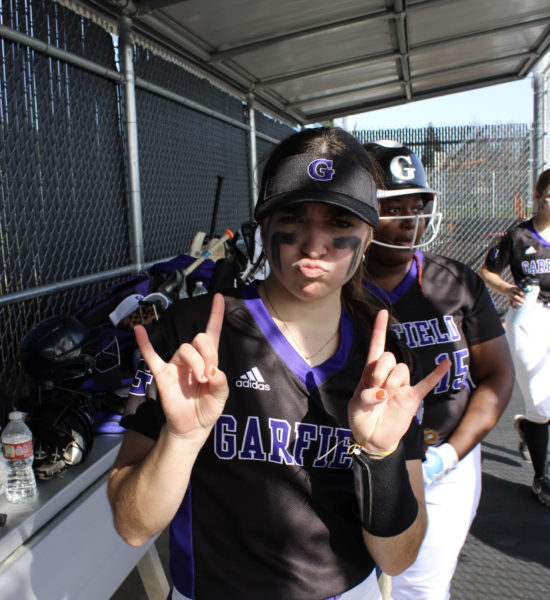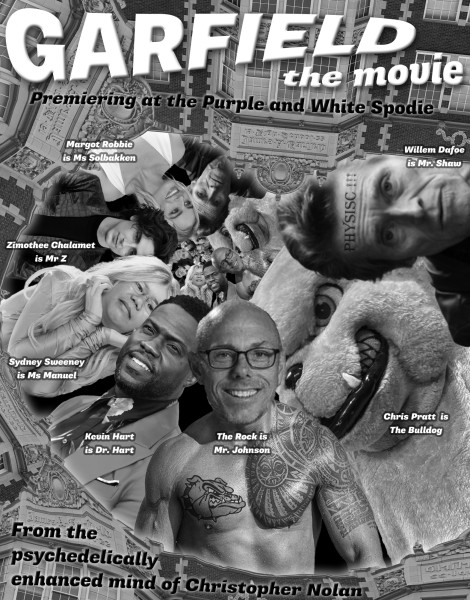Harmonious Hounds
Examining the culture and success of Garfield’s Jazz and Orchestra Programs.
Jazz:
Garfield High School is historically notorious for its jazz program. Led by Jared Sessink, the band was recently accepted as one of fifteen to compete in debatably the most prestigious highschool jazz festival in the country– Essentially Ellington.
The Essentially Ellington Jazz Festival entails recreating the sounds of Duke Ellington and other musicians from that era. “It’s a little bit like jazz football, you have to know the game,” Sessink jokes. Out of hundreds that apply, only three bands from the northwest region are accepted to the competition. This year those schools include Garfield, Roosevelt, and Bothell High School– all in the Seattle area. According to Sessink, this is no coincidence given that all of these schools are in one of the only regions to offer daytime jazz instruction as a class. Sophomore Miep Barr-Clingan who plays trombone in the jazz band notes that sectionals (small group practice) played a big part in preparing for the competition. “If you can’t get along with people you’re playing with, there’s no way to sound together and have the right vibes,” she remarked. Nonetheless, it is a huge honor to be invited to compete in New York. “I know if we hadn’t gotten in, the hard work wouldn’t have been for nothing, but it’s just so amazing that we did get in. I definitely happy cried. I’m looking forward to listening to all of the other great bands there, and being able to go to New York with a bunch of awesome people is such a great opportunity,” Barr-Clingan reflected.
The Jazz Band schedule is packed, with the festival being only one of the several performances that are coming their way. For their concert in Quincy Jones on March 29th, they’re working hard on music they picked out as a band from the Essentially Ellington library. Two days following, the ensemble will be showing up as one of the top five high school jazz bands in the state for the 26th annual Hot Java Cool Jazz event, a Starbucks sponsored event at the Paramount Theatre.
What truly separates the Garfield Jazz program from others is the culture and sense of community surrounding it. Above all, Sessink values his musicians and the passion they share for their craft. “I just want the band to continue to work towards whatever goals they have and then just put as much joy on that stage as possible,” Sessink shared. He can be confident that his band has lived up to his hopes. Barr-Clingan says that both her electives are music related, and that’s on top of having morning sectionals and her individual practice. She emphasizes her enthusiastic outlook on this, “I don’t mind because music is an outlet for me, so it’s not a burden. It’s more like something I get to do.”
The commutative atmosphere of the music department as a whole is shared by both students and teachers. Barr-Clingan expressed, “I think that everyone has a shared passion and knows that they can learn things from each other.”
The jazz program subtly contributes to the lively environment at Garfield– more commonly known as the Bulldog spirit. Music can almost always be heard coming from the band room at any point in the day, even before school hours. Barr-Clingan agrees, noting that the music department contributes to Garfield in its own subtle ways, “You can always walk by the music rooms and hear some sort of loud noises coming out of them– Drumline and Pep Band at sports games, choir singing in the halls during holiday season, Jazz occasionally at the assemblies, and Chamber Music Club has performances after school sometimes.” Sessink is confident that his band will represent Garfield justly. “I want us to be represented as authentically as possible. It has always come back to joy and love and just trying to be as authentic as we can possibly be.” And that is exactly the reason why people rave about the jazz program. “Garfield is such a unique school and I know that they’ll represent Garfield [well] just because of who they are.”
Composed mostly of seniors, this particular jazz band happens to have a special place in their director’s heart. Barr-Clingan recalls her time back in middle school, “I always looked up to the Garfield Jazz program. Hearing all about Essentially Ellington, I just thought how much fun that looked like. I still feel that way. It’s a great program in my opinion and it’s amazing to be a part of it.” The core of the Jazz band has been playing with Sessink since their time at Washington Middle School, which attributes to the pure chemistry they share on stage. “It literally feels like a family. It feels like there is an extreme amount of established trust that allows us to go way past what a normal student would experience being in a class with new people” Sessink remarked.
Orchestra:
An often overlooked yet extremely talented part of Garfield music is its orchestra program. The program consists of three levels, freshman, concert, and symphony orchestra. The freshman orchestra introduces students to the program and sets a baseline skill level. From there, students can either enter the concert orchestra, or audition into the more selective and challenging symphony orchestra. The program has numerous concerts throughout the year. Their regular concerts where they play classical music for the community, the Pops Concert, in which they play movie and pop songs, the Winter Waltz, which acts as a fundraiser and school dance, and the Senior Concerto Concert, in which seniors are given the opportunity to play a solo while being backed up by the orchestra.
The orchestra’s year will be highlighted by a trip to Los Angeles in late March. Joined by Garfield’s Symphonic Band, the Symphony Orchestra has a packed itinerary. The trip will consist of recording a movie soundtrack at Disneyland, listening to the LA Philharmonic perform in their famous Frank Gehry built concert hall, touring the campus of USC, and working with the music director of the USC Thornton School of Music, Larry Livingston. Garfield orchestra Director Bryan Kolk hopes that students see this trip as an opportunity to experience the music as well as the culture of another part of the country. “I think both are kind of equally important – to experience the musical life of another community, but also the culture of what it’s like to live and just engage as a human in Los Angeles.”
Miep Barr-Clingan who plays trombone in not only Jazz Band but also Symphony Orchestra shares, “I’m looking forward to collaborating with Symphonic Band. Even though the ensembles are pretty different, I think we have similar musical styles and it will be fun to work together.”
Violinist Athena Brkanac also expressed her expectations for the trip, hoping to get to know her fellow orchestra members better. “Orchestra is the only class where I could not name everyone,” Brkanac stated. This disconnect between students is understandable, as orchestra is one of the largest classes in the entire school. “I’m looking forward to some great community bonding with my peers,” she added. Brkanac also hopes this inspires the orchestra to enter more competitions. “I feel like that’s something our orchestra is missing that we had in the past,” she said.
This lack of entering competitions is most likely due to changes over the past few years that have forced Kolk to reevaluate how the orchestra program works. One massive change was the pandemic. As an activity that relies heavily on musicians being in the same room and collaborating with each other, transitioning to remote learning for a year made rehearsing together essentially impossible, and Kolk says the orchestra is still feeling the effects of that. “Now that we’re together in school, there’s many ways that we interact with each other that are different than they might’ve been.”
Another change the orchestra has faced is changes with the HCC program. Students in HCC tend to have more financial opportunities; musicians in the program are more likely to have access to private lessons, and therefore may have more experience on their instrument. The HCC program would historically bring students, and these more experienced musicians, from all around the city into Garfield. Now, Garfield has become less of an HCC feeder and more of a neighborhood school, so it has been receiving less musicians who take private lessons. As a result, the orchestras now contain a very broad range of skill levels. However, Kolk believes this has created an extremely unique and beneficial culture within the program, allowing students to teach and learn from one another. “The opportunity to be a model for each other and also to be a student of other students, I think that’s an integral part of every level of being a musician, and I think it’s part of the culture of the orchestra program here,” Kolk said. Brkanac agreed, stating, “The range [of skill level] is important. You need different opinions in an ensemble.”
Overall, the orchestra plays a special part in the Garfield community. “[It’s] a space where people can express themselves through music”, Brkanac said. “Someone who’s never befriended an orchestral musician or gone to an orchestra concert immediately thinks of it as a very stuffy, formal thing…and I would hope everyone could see orchestra as something that is part of their life every day,” Kolk remarked. “I would hope that anybody walking by our hall would feel safe and welcome to open the door and listen and enjoy.”

Jordana is a Junior at Garfield and this is her second year on the Mess! Her favorite (and strongest) section to write in is sports. Jordana plays softball...



